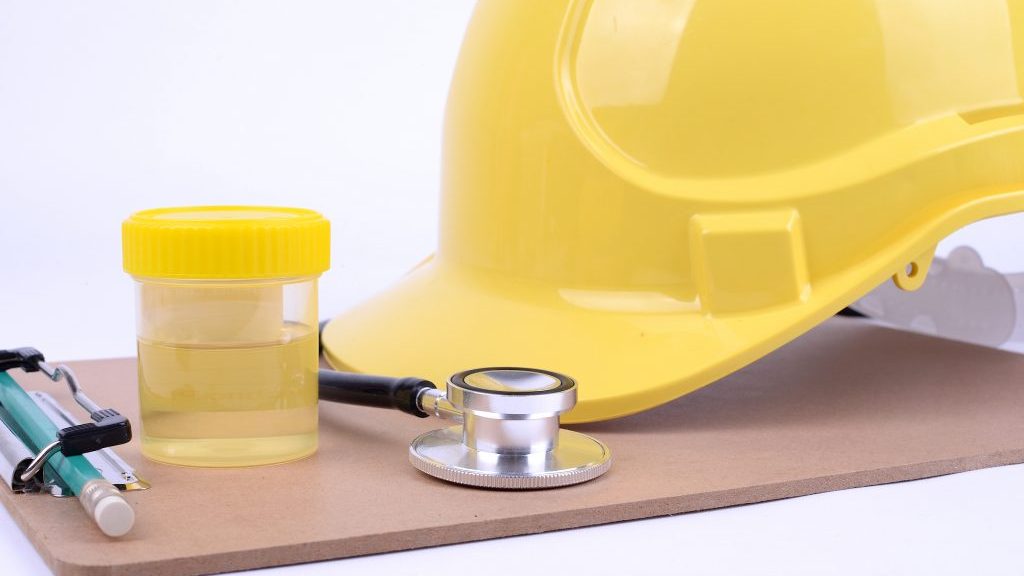A worker tests positive for drugs and is removed from the jobsite.
What are the next steps? How do you return those employees to work following this scenario?
Substance abuse professional (SAP) Julian Toy provided insight and strategies during a Fit for Duty webinar hosted by the Infrastructure Health and Safety Association Carpenters Trade Labour – Management Health and Safety Committee. His presentation provided suggestions, but every company should have its own policies.
“I strongly recommend that you consult with a professional provider prior to implementing any new policies,” said Toy, who is an addict in recovery.
About one in 10 workers has a moderate to severe substance use disorder, which is an accommodatable disability under the Human Rights Act, he noted.
“Companies that have not trained supervisors and workers in substance abuse recognition and intervention are at high risk of massive fines and possible jail time under the Ontario Health and Safety Act,” Toy said.
To protect the company and properly intervene with workers, supervisors need to be trained in defensible documentation.
The U.S. DOT (department of transportation) created the role of the SAP specifically to evaluate safety sensitive positions who return a positive drug or alcohol test during screening.
“They recognized that the current methods that they were using to evaluate employees who tested positive for a drug screen weren’t effective, necessarily,” said Toy, adding an employee might not fully disclose information to a doctor, for example.
“What the DOT recognized was that they had to send people who tested positive to someone who’s clinically trained in alcohol and drug addiction,” he said.
Over the years Toy has worked with adult treatment centres and people who have alcohol and drug addiction.
In terms of assessment tools, the Substance Abuse Subtle Screening inventory (SASSI) is one of the best in the industry. He advised attendees to make sure their provider uses the SASSI 4 as one of their assessment tools.
“It’s one of the only tests designed for substance abuse that takes into account that people who have that condition lie,” he said. “The test is actually sensitive to clients that are trying to deceive it and uses that as a way to determine if the person has a problem or not.”
The SAP does two assessments, an initial and a follow up. The initial assessment determines if the worker has a problem and recommends specific treatment and/or education as appropriate. An initial report issued to the company includes a test positive or test negative statement and specific treatment recommendations.
“Because I’m not a doctor, I can’t make a statement that someone has a substance use disorder, but a probability statement from a SAP assessment is good enough, because it’s a clinically validated instrument,” explained Toy.
The follow-up assessment determines if the worker complied with SAP recommendations.
“Once the employee completes my suggestions, what a SAP does after that, is, I have to make sure they’ve complied,” said Toy. “I will call the treatment centre, I will talk with their clinical therapist at the treatment centre. I’ll find out how they did during treatment, I’ll find out what the treatment centre thinks in terms of their progress and their understanding. Then I will issue a compliance statement and I will submit that to the company.”
If the worker complies, the SAP provides a date for return to work.
“I recommend a staggered return for most workers to allow them time to connect with community resources like Alcoholics Anonymous, Cocaine Anonymous or Narcotics Anonymous, to make sure that the recovery is solid before they actually go back to full-time work,” said Toy. “Ultimately it’s up to the company, whether to put them back on safety sensitive duties.”
He suggests using a SAP when a worker tests positive on a routine drug or alcohol screen; if they’re removed from the jobsite due to suspicion of impairment; when a worker is on short-term disability, Workplace Safety and Insurance Board or other benefits; and if they are significantly exceeding the expected date of improvement or return to work.
“One of the reasons for that is that people who have a substance use disorder often injure themselves on the job because of the fact that they’re impaired,” explained Toy. “Then what happens is, when they have a broken leg for instance, they’ll go home and if they’re taking narcotics, they tend to reinjure themselves because they can’t really feel any pain.
“It’s also possible they maybe are not being quite truthful and trying to delay the return to work.”
The webinar also included a presentation from Norm Keith, partner at KPMG Law, and Michael Church, partner at CaleyWray Lawyers.
Toy shared his personal story and struggle with addiction for the DCN-JOC special series, Cracks in the Foundation: Mental Health, Substance Use and Construction, which launched this month. His story will be featured in the second instalment, slated for next month.
Follow the author on Twitter @DCN_Angela.




Recent Comments
comments for this post are closed